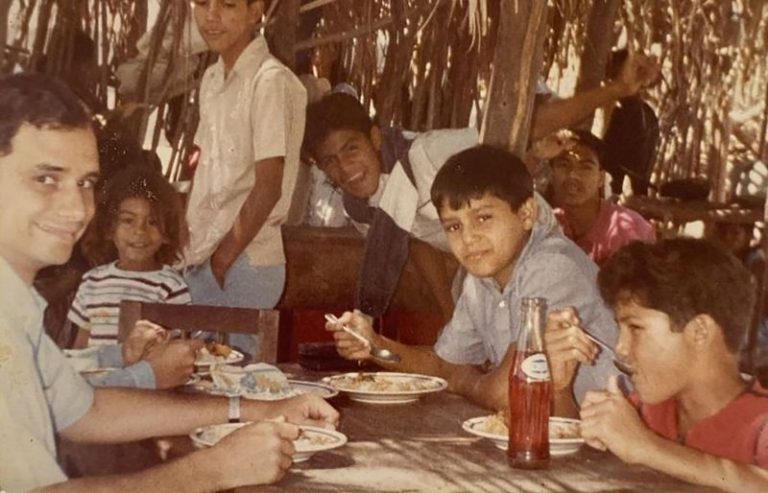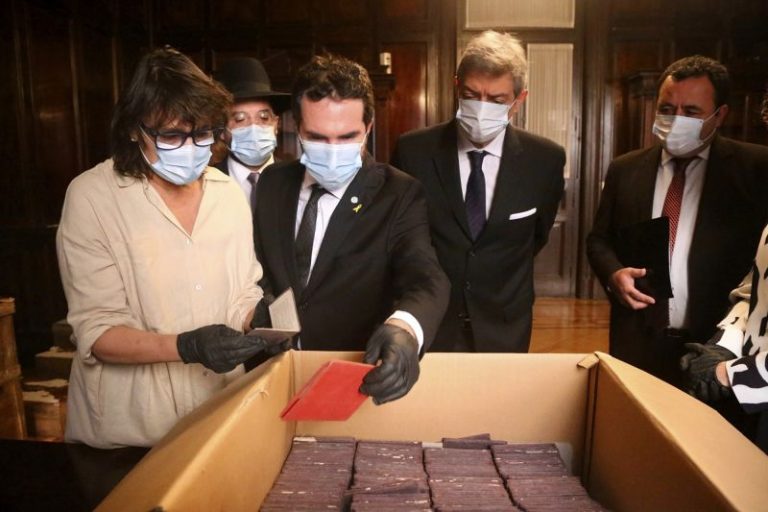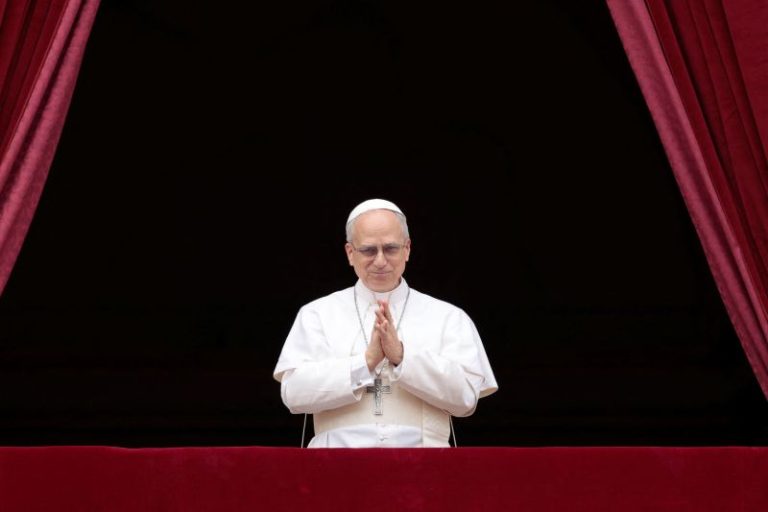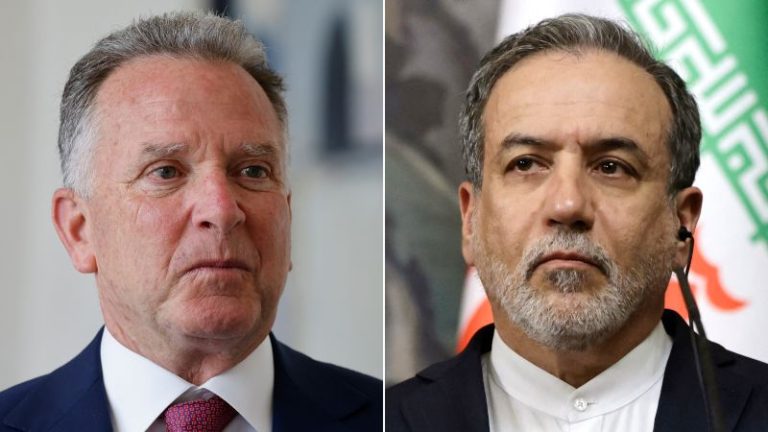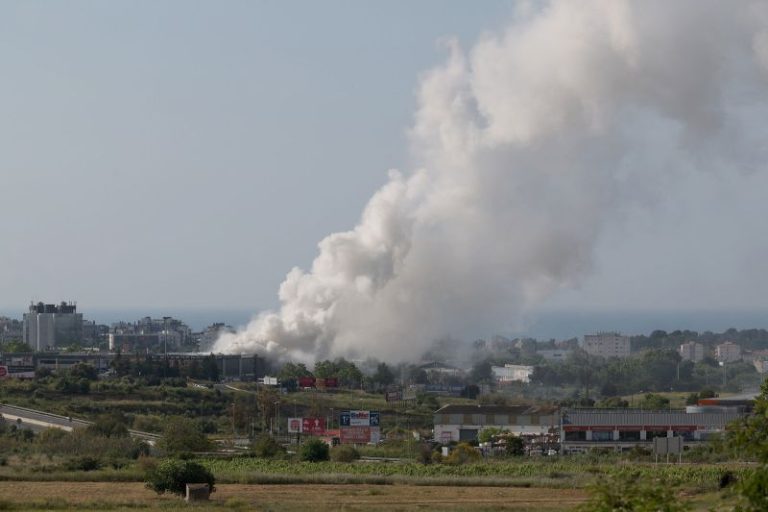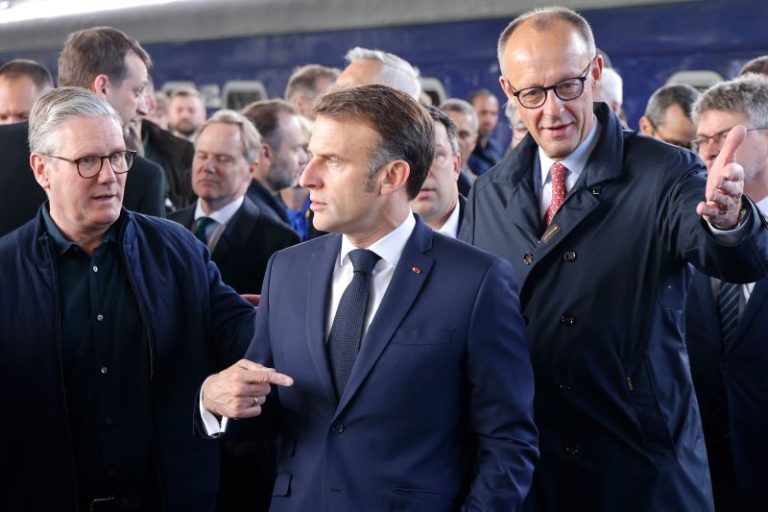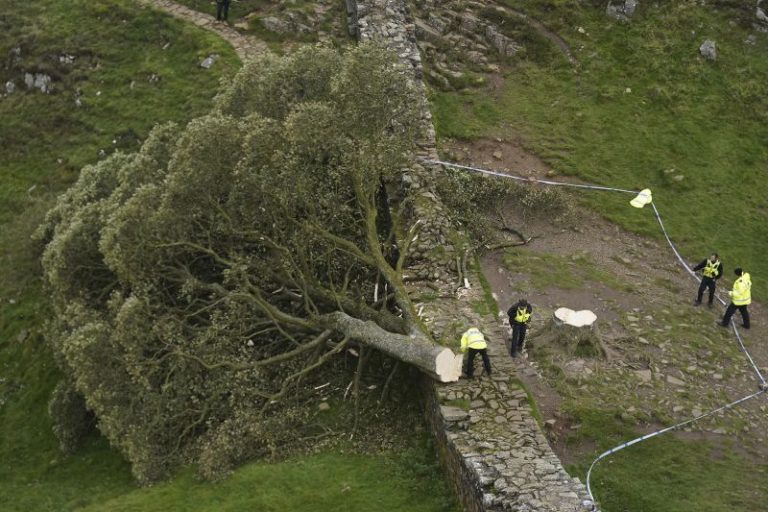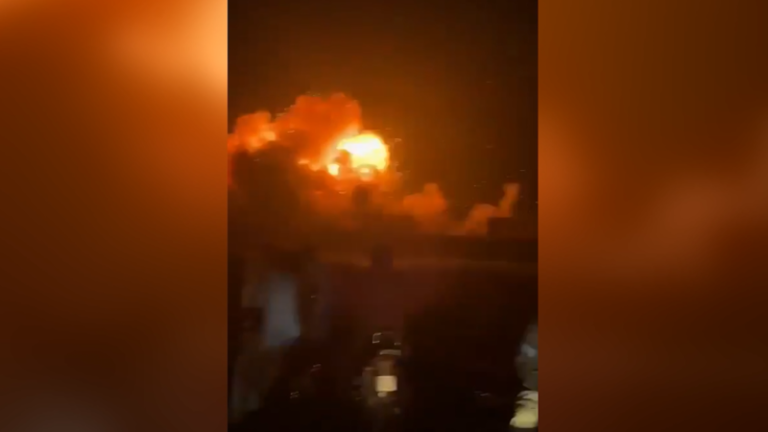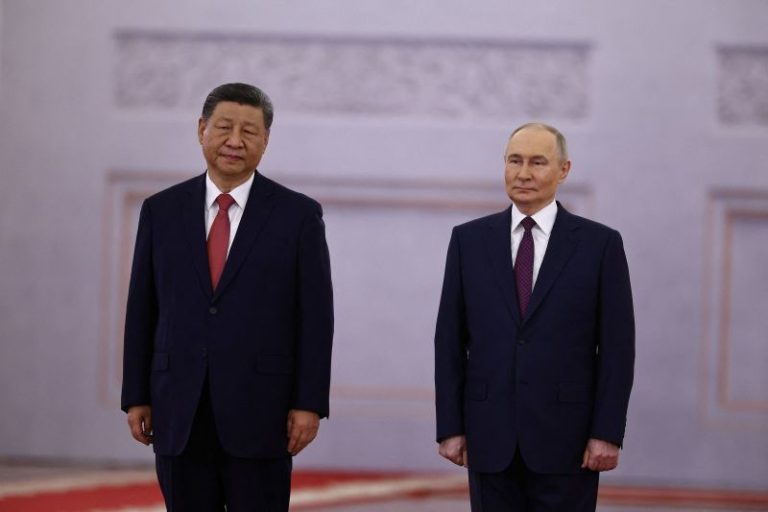Chiclayo’s main plaza was raucous with the sounds of hammering and music, people milling in anticipation as the scaffolding went up for vast digital screens in front of the city cathedral. Saturday’s open-air mass would be a very special one: a celebration marking the ascendency of Pope Leo XIV, the world’s first American pope – but better known here as Robert, the world’s first Chiclayano pope.
Through the cathedral’s open doors, a line of women formed in front of the confessional in preparation for the big evening. A children’s chorus performed on the steps, competing with the thumping bass of secular life down the street, where two men in short shorts were leading a dance class. Banners draped around the square showed Leo’s smiling face, 10 feet high. Signs outside a local restaurant touted its goat stew as his favorite lunch order, back when he lived here.
Inside the cathedral, Amalia Cruzado, 52, silently sobbed in the pews, her arms outstretched.
“It’s a day of miracles. Chiclayo is so blessed,” she said. After praying, she would head home and pick up the rest of her family to attend the evening mass; her elderly father, suffering from cancer, desperately needed a miracle for his health.
Pope Leo was born in the United States as Robert Prevost, but for his adopted nation of Peru – where he acquired citizenship in 2015 – he is a Chiclayano, a son of the bustling northern Peruvian city where he served as bishop for years, after working as a priest in the countryside.
Here, everyone has a story about him.
Back in the 1980s, Nicanor Palacios was an altar boy with Leo during his early priesthood in nearby Piura, and traveled the area with him for services. “Being the junior priest, he was often sent out in the field,” recalled Palacios, now an airforce technician. “He would take us out in the parish’s jeep to have lunch.”
“It wasn’t hard for him to fit in. There was a small village back then, called Kilometer 50, on the Pan-American Highway. He’d take us there for dry meat and fried plantains. He liked that type of stuff and liked to go to the country. He’d eat just like a northern Peru farmer: yucca, fried fish, maybe a bite of fried meat.”
“What I liked most was his advice, because many young people, even back then, they would get lost, but he was just a young man, 24 or 25 years old, very serious and full of advice,” said Palacios, whose mother died when he was young and for whom Leo and the other altar boys become a second family, he says.
Many years later, as a bishop in Chiclayo, Leo’s accent was still “very American,” according to local priest Emerson Lizana, 30, but his presence felt deeply familiar in this northern Peruvian outpost.
“The way he treated people, his presence enveloped you in a sense of trust. He had a Latin American heart,” Lizana said, describing how the then-bishop became part of the daily life of Chiclayo, visiting the city’s poorest neighborhoods and carrying a cross through deserted streets during the Covid-19 pandemic.
Searching for truth and searching for God
Chiclayo is a city famous for the fervor of its faithful, even in deeply Catholic Peru. According to a 2017 census, Peru’s population is 90% Christian and 76% Catholic – more than Italy and far more than in Leo’s native United States, where Catholics are under 20%.
Leo, widely considered a progressive pope and ideological successor to Pope Francis, worked closely with the neediest in Chiclayo, coordinating local NGOs, churches and religious groups in the late 2010s to assist a flood of Venezuelans fleeing political chaos and economic collapse in their home country.
But his tenure has not been without criticism – three women allegedly abused by a local priest released a letter in September last year accusing Leo of failing to fully investigate their claims while he was bishop. The new pope has also been called upon by Catholics for Choice to change his views on abortion; an X account under Prevost’s name previously shared articles critical of reproductive rights and “gender ideology.”
“We are very worried. As you may have noticed, there is a lot of emotion in the province and in the region about the appointment of the Pope who was from Chiclayo. Ultra-conservativism, fundamentalism, new movements can emerge from evangelical and Catholic roots,” she said.
“Above all it is the Church that has maintained this idea of being against abortions, that abortion is also a sin, that it is murder. And this continues to be referred to and repeated by the Peruvian authorities.”
Abortion access is heavily restricted in Peru; in 2023, the United Nations accused Peru’s government of violating the rights of a 13-year-old girl who was refused an abortion following years of rape by her father, and then imprisoned by local authorities after she miscarried.
Still, for a pope, Leo’s social progressivism in other areas is seen locally as an overall “good direction” by some rights advocates.
“We don’t expect that suddenly the Pope goes out and defends the rights of women, but perhaps he will take a position that is a bit more human, and less stigmatizing of women who interrupt their pregnancies,” said Rossina Vasquez, director of a women’s rights group in Peru.
An interest in seeking truth and justice is part of the worldview of Augustinian priests like Leo, according to Friar Pipé, teacher at an Augustinian-run school in the outskirts of Chiclayo.
“For us Augustinians, God is the truth, and for us searching for the truth is searching for God,” said Pipé. “What I hope is that Leo can be a pope who becomes a sign of unity for the church: we can always do better, through dialogue and understanding, both inside our Church and with other religions,” he added.
Pipé, 30, was personally ordained by Leo in 2023 and blessed him in return per tradition; a blessing that he now jokes may have played some role in Leo’s chances during the Vatican’s conclave to select a new pope last week.
He remembers watching a broadcast of the process on YouTube as it played out in Rome, his fellow Augustinians erupting in whoops of joy and triumph when Leo’s name was called out.
With a Chiclayano pope, now anything is possible, Pipé joked.
“Let’s see,” he laughed. “When Benedict was the Pope, Germany won the World Cup. Then Francis was the Pope, and Argentina won… now, Robert is Pope, either Peru or the USA are going to win the World Cup.”
But for believers like Amalia Cruzado, who have little but their faith, the sense that this is a particularly blessed time for Chiclayo is no laughing matter.
In her modest neighborhood, where Cruzado says children often go hungry or cannot afford shoes, dust rose on Saturday evening as a taxi bumped down the unpaved street, the decal on its rear window reading “La Bendición de Dios.”
It was finally time for the evening mass.
Her family of eight piled in – freshly dressed and coiffed, from her 9-month-old grandson to her 79-year-old father – for a hair-rising ride through traffic back to the darkening square. Street lights flickered on as they arrived, police still hard at work cordoning off the cathedral’s steps for the night’s rituals.
Cruzado hoisted her grandson in one arm and shepherded her father toward the front, past crowds taking selfies in front of the Pope’s illuminated likeness. Soon prayers would begin, followed by a familiar order: readings from the Bible, the homily by Chiclayo’s new bishop, communion.
“Papa! Amigo! El pueblo esta contigo!” congregants chanted in the crowd, blasting airhorns and lifting their children in the air as if it were a home team game. “Pope! Friend! The people are with you!
“Let me tell you, the Pope has two hearts: one is for where he was born, but the other one is for here, for us, the humble people of Chiclayo,” Cruzado said. “He is our Pope.”

